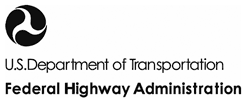Resources on Work Zone Safety and Mobility Performance Monitoring and Measurement
Printable Version [PDF, 1.4MB]
You may need the Adobe Acrobat Reader to view this PDF.
Contact Information: WorkZoneFeedback@dot.gov
WHAT ARE WORK ZONE PERFORMANCE MEASURES?
Work zone performance measures are metrics that help quantify how work zones impact travelers, residents, businesses, and workers. Some performance measures describe how an individual work zone impacts these audiences; other performance measures describe how a group of work zones collectively affects them.
WHY ARE WORK ZONE PERFORMANCE MEASURES NEEDED?
Work zone performance measures are a key component of an agency’s continuous improvement program. Performance measures can help agencies identify where improvements are needed, verify that changes in agency policy and practices to improve performance have worked, and assist agencies in communicating with the public and elected officials about the actual effects of work zones.
WHAT IS NEEDED TO INIITATE A WORK ZONE PERFORMANCE MEASUREMENT PROGRAM?
Although initiating a work zone performance measurement program can seem daunting at first glance, it need not be an overwhelming activity for an agency or contractor. The key steps are to determine:
- What measures are needed,
- How to get the data needed to compute them, and
- How to best interpret and use them as part of one’s day-to-day business practices.
Three FHWA documents have been developed to assist agencies and contractors in selecting and using work zone performance measures.
A Primer on Work Zone Safety and Mobility Performance Measurement
FHWA-HOP-11-033, September 2011
This document “sets the stage” for agencies and contractors on how to get started on a work zone safety and mobility performance measurement program. It explains the difference between measures that represent project-level impacts and those that represent agency program-level impacts. The primer provides suggestions to aid agencies in initiating work zone performance measurement and deciding what characteristics constitute a good performance measure.
Performance measures should:
- Relate to the safety and mobility goals and objectives of an agency;
- Be consistent with measures used to assess impacts during work zone planning and design;
- Enable the agency to fully characterize work zone impacts;
- Enable the agency to evaluate the effects of strategies to mitigate the impacts; and
- Be compatible with other performance measures an agency is using to evaluate its system.
The Primer lists a range of possible performance measures that agencies could consider using, along with some considerations for using them. Three basic types of measures are discussed:
- Exposure measures
- Safety measures
- Mobility measures
Examples of some of the ways in which the measures could be assessed (via collected data, traffic simulation models, computational procedures, etc.) are also provided.
Work Zone Performance Measures Pilot Test
FHWA-HOP-11-022, April 2011
This document is a companion to the Primer, and summarizes the lessons learned through the identification and testing of a candidate set of work zone mobility-related performance measures at five projects nationally.
Three different types of field data collection were attempted and compared at each site:
- Manual documentation of queue duration and length by field crews;
- Collection and analysis of traffic surveillance sensor data, either from a regional management center (TMC) or a portable work zone intelligent transportation system (ITS);
- Examination of third-party probe vehicle data collected in the vicinity and during the time that the work zone was present.

Examples of Some Lessons Learned:
- Agencies need an operational definition of a “queue” (typically an average speed threshold) so that all personnel assess queues consistently
- Manual data collection techniques are less effective in capturing short disturbances that result in queues
- The accuracy of work zone measures from TMC data depends heavily on traffic sensor spacing and location relative to the work zone
- The % time when queues exceed agency-established queue thresholds is a useful performance measure
- The % of vehicles encountering a queue is also a useful measure of work zone impacts
Guidance on Data Needs, Availability, and Opportunities for Work Zone Performance Measures
FHWA-HOP-13-011, March 2013
This third document in the series is designed to provide more in-depth information and guidance on the types of work zone safety and mobility performance measures practitioners deem useful, and the data needed to develop and use those measures to improve agency and contractor practices. An expert panel of practitioners identified and prioritized the importance and value of possible measures within each of four major work zone performance categories:
- Mobility
- Safety
- Customer satisfaction
- Agency and/or contractor efficiency and productivity
The Guide describes data needed to (1) compute measures, (2) evaluate work zone exposure, and (3) stratify data to describe when and where the work zone impacts are occurring. The Guide identifies methods of obtaining data and summarizes key considerations associated with each type of data.

Where can I find these documents?
A Primer on Work Zone Safety and Mobility Performance Measurement
FHWA-HOP-11-033, September 2011
http://ops.fhwa.dot.gov/wz/resources/publications/fhwahop11033/fhwahop11033.pdf
Work Zone Performance Measures Pilot Test
FHWA-HOP-11-022, April 2011
http://ops.fhwa.dot.gov/wz/resources/publications/fhwahop11022/fhwahop11022.pdf
Guidance on Data Needs, Availability, and Opportunities for Work Zone Performance Measures
FHWA-HOP-13-011, March 2013
http://ops.fhwa.dot.gov/wz/resources/publications/fhwahop13011/fhwahop13011.pdf
FHWA-HOP-13-014
